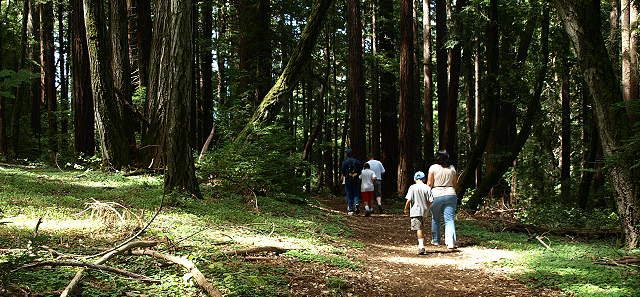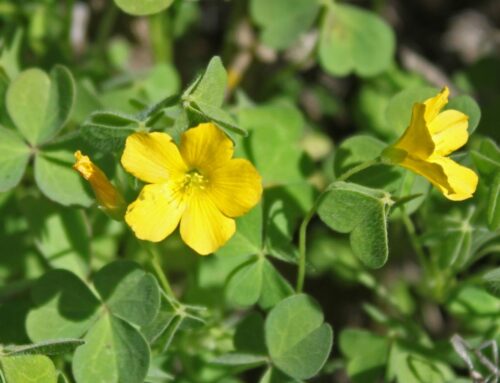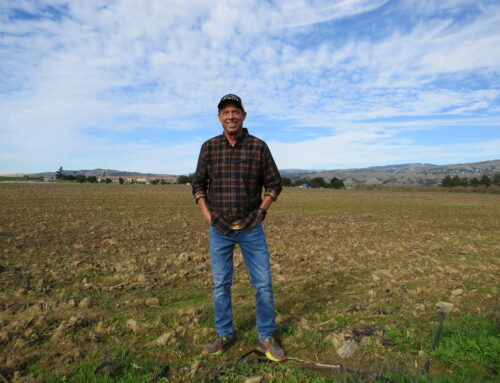High fuel loads are evident in all of the park’s landscape zones

Families enjoy a hike on a Mt. Madonna trail.
By Mike Monroe

Mike Monroe
It’s been a while! My enthusiasm for returning to the trails of Mt. Madonna County Park, with groups of friends talking about the history and ecology of this special place, has been suppressed for far too long.
While Santa Clara County Parks has not officially announced new COVID-19 protocols, we should be able to enjoy unrestricted conversation and group gatherings beginning in mid-June. As I’m getting older, the hikes will be less about mileage and more about the many fascinating features of Mt. Madonna.
It sure would have been wonderful to include the disclaimer that the walks (not really hikes anymore) would be cancelled on account of rain. We certainly need the moisture here and everywhere in California. With another exceptional drought looming and warmer temperatures in our future, the subject of climate change has certainly been in my thinking as it relates to the impacts upon our redwood forest ecosystem and fire risks.
In 2017, SCC Parks prepared a Forest Health Plan for Mt. Madonna. Soon thereafter, a significant investment was made in expanded water storage infrastructure. And in 2018 the shaded fuel break demonstration project along Valley View Road was completed. Mt. Madonna is considered to be in a “high fire severity zone” due to high rates of understory tree mortality (tanoaks and madrones) caused by drought stress and soil pathogens. High fuel loads are evident in all of the park’s landscape zones and, in a few places, are especially exacerbated by the presence of non-native Eucalyptus which are highly flammable.
 A total of 16 projects were identified in the Forest Health Plan. The two most urgent tasks, which will soon be underway, are the removal of 25 acres of Eucalyptus trees and the establishment of a 2.5-mile shaded fuel break along Pole Line Road. The objective is to reduce the opportunities for a catastrophic wildfire and provide enhanced evacuation and access routes for visitors and fire-fighting responders.
A total of 16 projects were identified in the Forest Health Plan. The two most urgent tasks, which will soon be underway, are the removal of 25 acres of Eucalyptus trees and the establishment of a 2.5-mile shaded fuel break along Pole Line Road. The objective is to reduce the opportunities for a catastrophic wildfire and provide enhanced evacuation and access routes for visitors and fire-fighting responders.
As we learned from the CZU Fire in Big Basin last year though, our forested areas contain vast amounts of fire prone standing trees and fuel loads from years of accumulating vegetation. The chance of a “mega” fire is still a very real possibility as moisture levels and wind speeds are beyond our control. We need to redouble our efforts at practicing fire safety to prevent wildfires, most of which are caused by humans.
 Shaded fuel breaks along roadways are one of the tools now being frequently used to assist with fire safety efforts. By enhancing landscape resilience, much like the concept of “defensible space” around homes and utility structures, property damage and injuries to people can be avoided. These breaks are engineered by removing brush, dead and dying vegetation and low limbs of trees to lessen the ability of fire to climb vertically into the tree canopy. In April of this year, CalFire approved an additional investment along Summit Road where it connects with Mt. Madonna to again reduce ladder fuels.
Shaded fuel breaks along roadways are one of the tools now being frequently used to assist with fire safety efforts. By enhancing landscape resilience, much like the concept of “defensible space” around homes and utility structures, property damage and injuries to people can be avoided. These breaks are engineered by removing brush, dead and dying vegetation and low limbs of trees to lessen the ability of fire to climb vertically into the tree canopy. In April of this year, CalFire approved an additional investment along Summit Road where it connects with Mt. Madonna to again reduce ladder fuels.
Many of us have turned to our park resources during the COVID-era, hiking and biking for our physical and mental health. I’ve been fortunate this spring to walk the trails in my volunteer capacity at Mt. Madonna greeting trail users, but I have sure missed those occasions to freely interact with visitors in a relaxed group experience, without the underlying stress of infection spread.
Several things have not changed though, and I wish they would. For the most part, people respect our natural world. Still I come across litter on trails, graffiti on rocks and trees, flowering plants clipped and vehicles vandalized. I wish there were a way to achieve 100 percent accordance with the “leave no trace” principle. Outdoor human behavior and our broadening environmental awareness has come a long way — let’s keep it up!
I hope to see you at Mt. Madonna on a Saturday morning this summer. Keep on sauntering!




